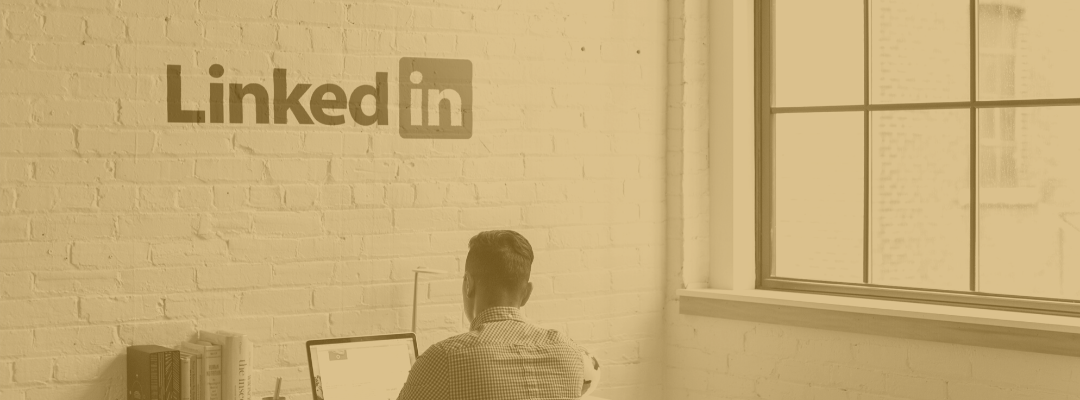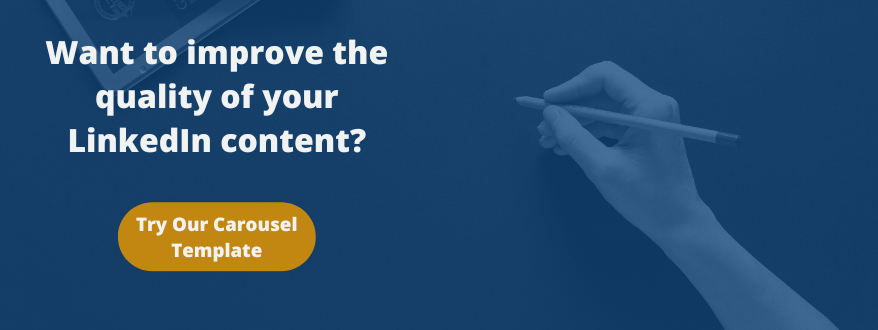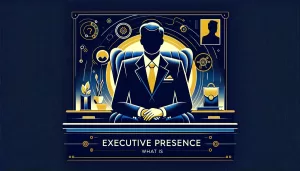We’ve put together a list of 7 LinkedIn personal branding examples so that you can have an idea of how to build your personal brand on LinkedIn.
There is no doubt that if you want to become the go-to thought leader in your b2b niche you must have a good presence on LinkedIn.
Linkedin has more than 810 million active users in more than 200 countries. This means that your ideal client is there. Also, all the decision-makers, influencers, advocates, and champions that you need to close a b2b deal are there as well.
In this article, we’ll share with you everything you need to start building your personal brand on LinkedIn.
Contents
Why Have a Personal Brand On LinkedIn?
Here are some of the results you can expect from these efforts:
- Increase the number of people that know you
- Meaningful connections and conversations
- Potential clients
- Invitation to speaking engagements
- Promotion of other sources of revenue
Let’s explore the details of each:
.
Increase The Number of People That Know You
It’s no secret that people that don’t know you won’t buy from you. The awareness you get from sharing content on LinkedIn is likely the highest you’ll get from organic content. Keep in mind that when someone from your network engages with your content, it’ll be shown to people IN THEIR NETWORK as well.
This means that people who don’t know you will get to know you and the value you can offer.
Meaningful Connections and Conversations
When you post content consistently, you’ll start to create a group of people who engage in a meaningful way with your content.
This will allow you to have conversations with other experts. And also with people who have been getting value from your content, who will share feedback that you can implement into your content.
Potential Clients
We know that it’s highly unlikely that someone is going to click on a button to buy a b2b service. Yet, you’ll be able to move people through your customer journey by sharing, top-of-funnel, middle-of-funnel, and end-of-funnel content (this mix should be part of your content strategy).
Invitation to Speaking Engagements
As you start to share video content, you’ll show decision-makers your ability to share knowledge and insights in an engaging way. This could lead to speaking opportunities, which further help position you as a go-to thought leader AND also be in front of your ideal audience.
Promotion of Other Sources of Revenue
Once you’ve been creating and sharing valuable content with consistency, you’ll be able to monetize this attention in different ways. Not only you’ll be able to get regular clients, but you might be able to also sell coaching services, books, mastermind sessions, subscription services, and many other opportunities will likely arise.
Yet, this won’t happen overnight.
We’ll now go deeper into these aspects of personal branding on LinkedIn:
-
Examples of B2B Leaders who are leveraging LinkedIn the right way
-
A detailed plan for a B2B company that already has a lot of content
It’s important to highlight that we’ll share resources, sample timelines, and examples of the most basic elements you need to understand so that you can at least post once per week, with minimal time investment, right after reading this article.
These are the same methods we use with our clients, which range from leaders at public corporations with $1.9 billion in revenue, to leaders at mid-size companies with $40+ million in revenue, and also consultants with six-figures in revenue. If it works for this wide-range of professionals and companies, it will work for you as well.
It’s important to highlight that these results can be achieved through other social media channels as well. Yet, if you are in the B2B space, LinkedIn is going to be the platform where you’ll get the best return on your investment.
6 LinkedIn Personal Branding Examples
Justin Welsh
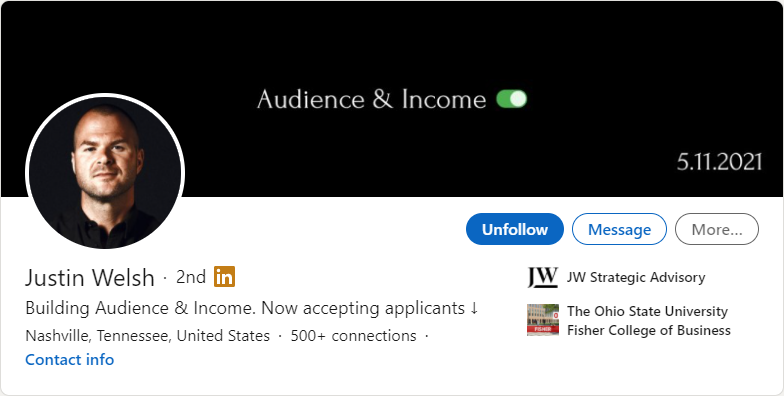
.
Over the last decade, Justin has been involved in building two $50+ ARR companies and raising over $300M in venture capital.
In 2019, he decided to redesign his life and leverage his personal brand to transform active income into passive income.
As you can see, it’s key to actually be good at what you do. Justin didn’t decide out of the blue to focus on this personal brand to create cash flow. He had been successful as an SVP of Sales, as Interim Chief Revenue Office, and as Strategic Advisor for several companies.
All of this has allowed him to create revenue in different ways.
-
Advisory packages starting at $4,000 per month
-
60-minute coaching sprints at $1,250
-
LinkedIn Playbook at $50
And I’m sure there are other ways in which he’s creating revenue.
Justin is a great example of how even at the basic level of content creation, you can get big results. By clicking here, you’ll go to the “recent activity” page of his LinkedIn profile and will get an idea of the type of posts he shares.
He combines strategic, tactical, as well as inspirational posts. Also, he has a great mix of content that speaks to his audience at different stages. Some are stand-alone posts, and others have call-to-actions to get people deeper into his funnel (to move them closer to becoming paying customers). It’s important to highlight that most of what he shares is written content. No design, photography, or videography skills are required to create the majority of the content that Justin shares.
Also, as you can see, he’s leveraging most of the content, and awareness, for B2B and B2C offerings. And you could do the same.
Sheri R. Hinish
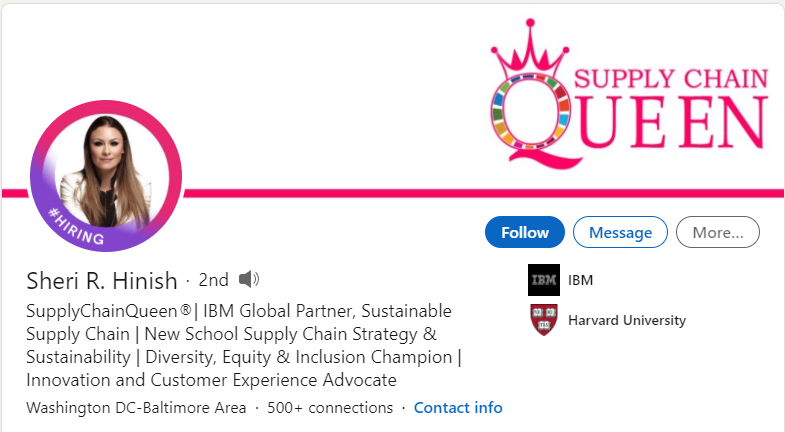
.
Sheri R. Hinish has been nicknamed the “Supply Chain Queen” and has been recognized as a 2021, 2020, and 2019 Supply & Demand Chain Executive “Pro to Know”.
She is currently in a senior leadership position at IBM, where she supports Global Supply Chain Transformation teams, with a focus in:
-
Sustainable supply chain
-
Green omni-channel
-
Product innovation
Sheri has an excellent pillar of content in her podcast, “Supply Chain Revolution”, and keeps her post simple by combining great captions with relevant images/photos. She shares videos here and there, which allows her audience to create a closer connection with her and the knowledge and insights she shares.
She also includes short text-only posts, with relevant hashtags, to add variety to her timeline and content mix. And, here and there, she also includes some personal posts, related to her family.
By clicking here, you’ll go to the “recent activity” page of her LinkedIn profile and will get an idea of the type of posts she shares.
Sheri is clearly maximizing all the tools and resources she has available to create and distribute content. And you could do the same.
Sam Moss
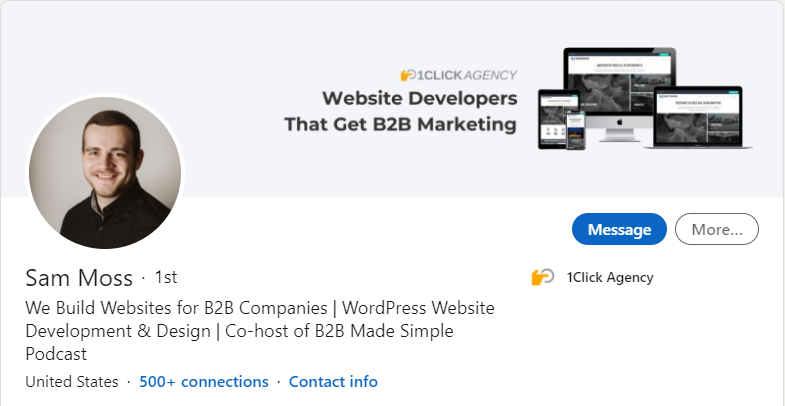
.
Sam Moss is the co-founder of 1Click Agency, where they build websites for B2B companies.
It started as a side business and has turned into a full-service website design and development agency with a team of 13 web developers and web designers.
Sam has over 10,000 followers on LinkedIn and gets considerable engagement from his activity on this platform which is likely generating leads for his business.
He is another great example of how to keep it simple. He shares video content and written content. Yes, he could do carousels posts, build a YouTube channel, and leverage many other aspects of a content-on-content strategy. But what he could do has not stopped him from doing what is getting him results.
By clicking here, you’ll go to the “recent activity” page of his LinkedIn profile and will get an idea of the type of posts he shares.
Sam focused on what works. They don’t share content on their company page. Their website has the minimal information needed. And they leverage their podcast as their main content pillar. Sam is keeping it simple. And you could do the same.
Camille Trent
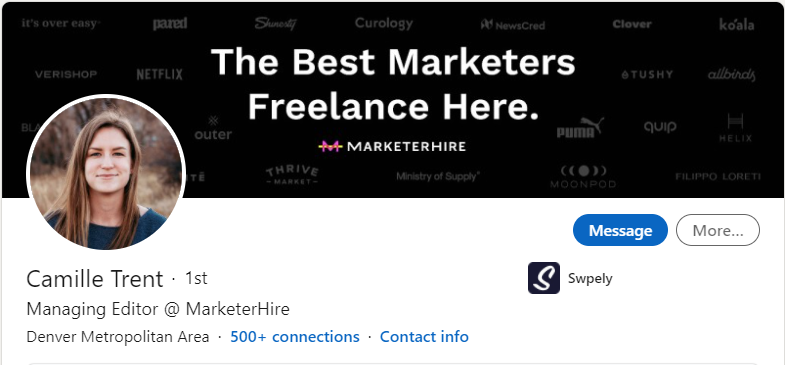
.
Camille Trent is Managing Editor at MarketerHire, a network of pre-vetted, freelance marketers. Their mission is to connect top marketing talent with experience from global brands and startups with businesses quickly and seamlessly. She is also an Advisor at Swpely.
Camille is clearly at the intermediate and getting close to advanced levels of content strategy mix. She shares:
-
Text-only posts
-
Re-shared content from the MarketerHire LinkedIn page
-
Image/photo-based content
-
Repurposed video files from her podcast interviews
-
Repurposed audio files from her podcast interviews
By clicking here, you’ll go to the “recent activity” page of her LinkedIn profile and will get an idea of the type of posts she shares.
To take it to the next level, they could share all those podcast interviews (video files) and share on the MarketerHire YouTube channel, or her personal YouTube channel, to maximize the value of these by leveraging the power of search engines.
Yet, with more than 11,000 LinkedIn followers and a great engagement rate, it’s clear that Camille knows what she is doing. If there is room for growth it is likely because they are maximizing the resources available and decided to focus on a few areas and do these with excellence. And you could do the same.
Jocko Willink
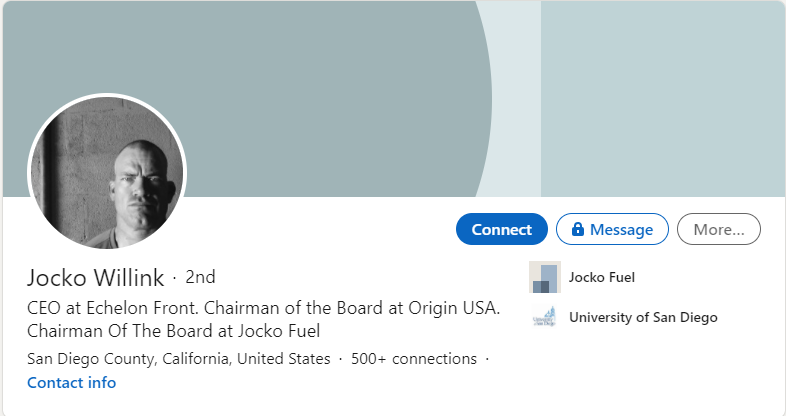
.
During the last 6 years, Jocko has gone from basically unknown successful Navy Seal, to one of the biggest leadership thought leaders in the world.
He is the Owner of Echelon Front, a company whose mission is to “educate, train, mentor, and empower leaders and organizations to achieve total victory”. It’s true that Jocko was successful as a thought leader before that. And this is the same case with most leaders out there. He didn’t need a personal brand.
You don’t need a personal brand to be successful. Yet, getting to the next level of leadership will be challenging without a personal brand.
He was able to start growing and leveraging his personal brand after a Podcast interview with Tim Ferriss. Doing so led to him starting his own podcast.
Since starting his own podcast, Jocko Willink has been able to:
-
Write books for children
-
Write novels
-
Create several apparel and clothing brands
-
Create an energy drink and supplement brands
And these are just a few of the ways in which he has been able to create value for others while at the same time create several sources of income. All these wouldn’t have been possible without the focus on promoting his personal brand.
By clicking here, you’ll go to the “recent activity” page of his LinkedIn profile and will get an idea of the type of posts he shares
Jocko is at the advanced level of content creation. He has a podcast, he has video ads, he shares video content, and clearly has a whole team helping him with this. Yet, the investment in this content production machine has fueled all the monetizing results we mentioned.
Again, there needs to be substance behind the form. Just sharing a lot of content won’t get you there. But without it, it would be hard to get here. He’s the same great leader he was in 2015, at that point he decided to invest in personal branding with a Podcast, which later grew into all the content we see nowadays, and now he’s able to command more attention thanks to the platform he’s built. And you could do the same.
One LinkedIn Personal Branding Examples for B2B Companies
.
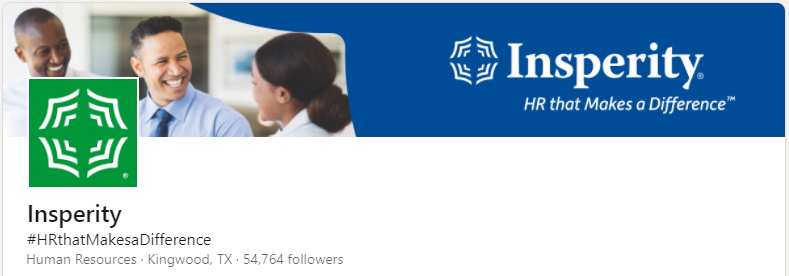
.
As you can see, there are many ways to build a personal brand on LinkedIn. Now, we are going to get deeper into the specifics of how to do this.
We’ll use Insperity as our example. I’m biased because they have strong ties to the University of Houston. But who knows, if you find this example valuable, we might decide to start a series where we share examples of how B2B companies can leverage their content on LinkedIn for growth.
Insperity already has A TON of content on their website. They not only have educational content in the form of blogs, but they also have great landing pages which share specifics about who they can help and how they help.
One of the most common mistakes in b2b content marketing strategies is that people go to the extremes. Either they only share educational content and never inform their audience about their services, or they only share promotional content and never educate their audience on the value or problems that can be solved when leveraging their services.
By clicking here, you’ll get access to a sample plan we’ve put together that helps as a guide to anyone on how to leverage their company’s content and is something that Insperity employees can leverage right away.
In the file you’ll see:
-
Links to the content we recommend sharing
-
Captions we recommend including when sharing the links (that you can copy and paste)
-
Classification of the type content so you can better understand the thought process behind the way we organize content
For Insperity employees, this is something that you can leverage in an evergreen manner. You could share this same content every 2-3 months because keep in mind that when you share something, not all your connections will be exposed to that content.
Thus, by sharing content “A” on a Monday of May at 10:00 AM and then on a Thursday in June at 3:00 PM, you’ll be maximizing the probability that everyone in your audience will get to at least see the post.
Normally, what we recommend to clients is to have:
-
Baseline educational content (shared every month)
-
Baseline promotional content (shared every month)
-
New educational and promotional content (shared when it is created)
-
Evaluate data so that the baseline content is the one that is performing best (in terms of reach, views, click-through rate, etc.)
By having a baseline of content that is shared every month, you guarantee that all your new connections and followers will be informed of the value you can create for them while also increasing the probability of being top-of-mind for the problems you can solve for your niche.
The typical fear here is that it will seem repetitive. It’s not.
Many people watch the same movies over and over and read the same books over and over. Repetitive content is not a problem. Repetitive bad content is a problem. You just have to make sure the content is valuable and relevant to your audience.
The algorithm will take care of putting your content in front of the people who will likely get more value from this. Trust the algorithm.
I’ve seen the behind-the-scenes of how a piece of content that was created 2-3 years ago is shared again on the company page and dozens of employees re-share it on their personal page because it resonated with them.
You must always squeeze all the value you can get from your content. Most companies create blogs, landing pages, and other digital assets that are NEVER shared on social media. This is a BIG waste of money.
